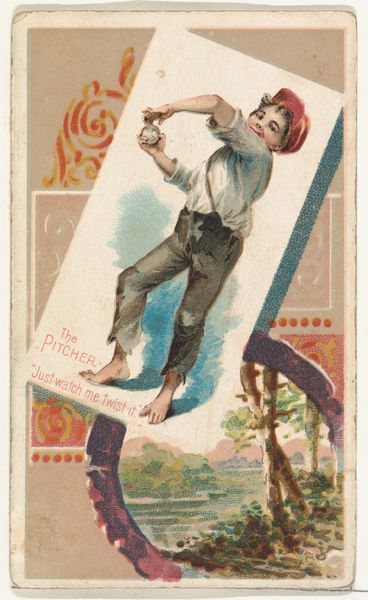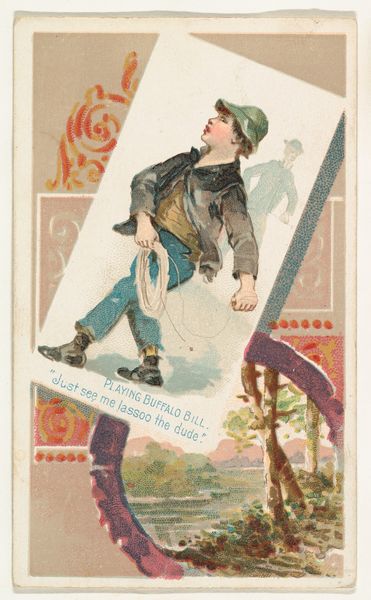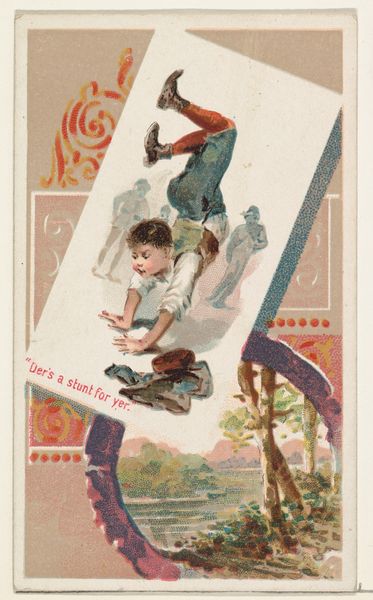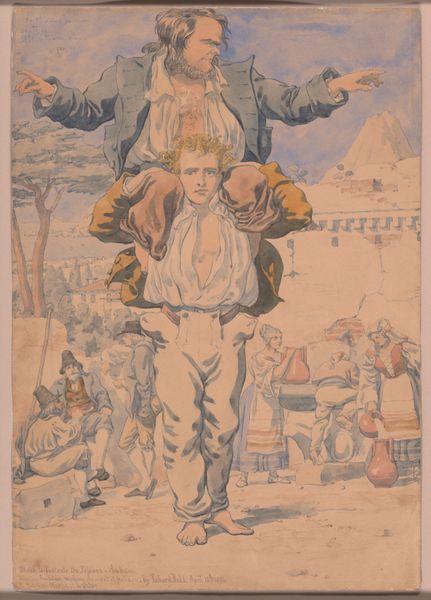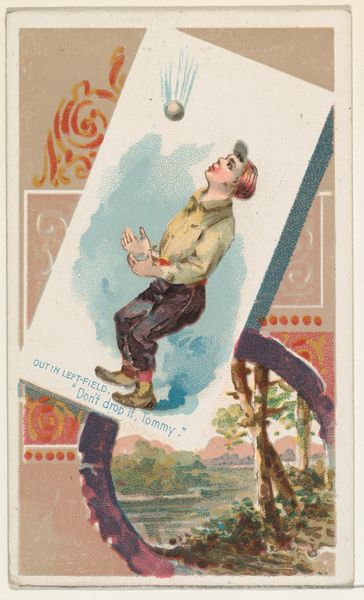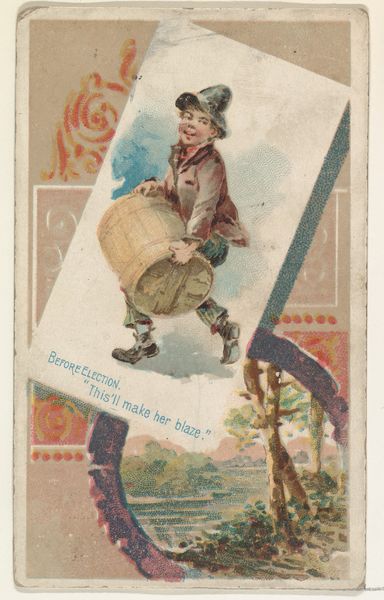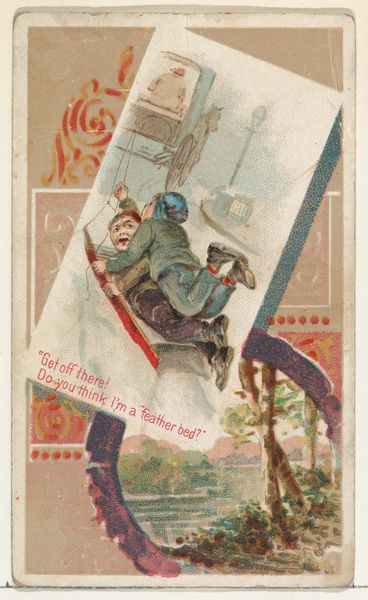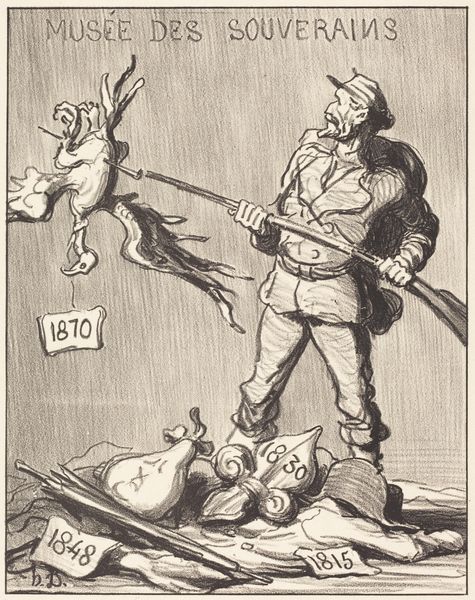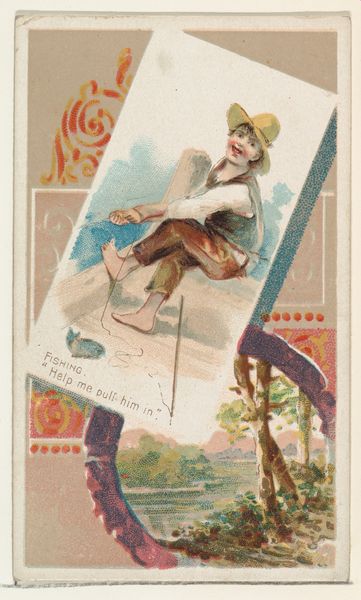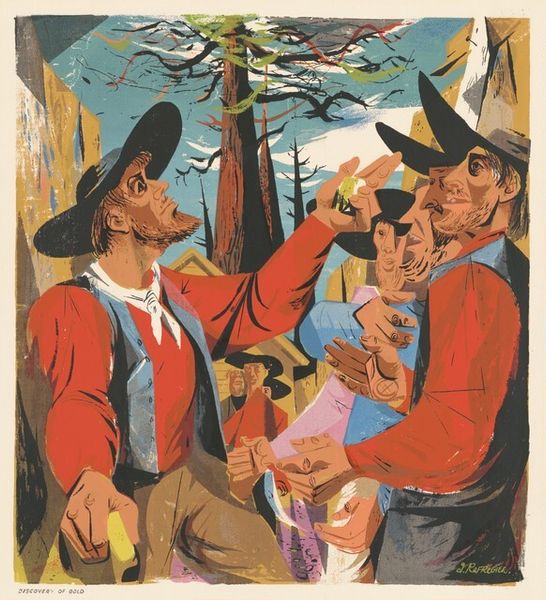
Beneath His Notice, from the Snapshots from "Puck" series (N128) issued by Duke Sons & Co. to promote Honest Long Cut Tobacco 1888
0:00
0:00
drawing, mixed-media, coloured-pencil, print
#
drawing
#
mixed-media
#
coloured-pencil
#
water colours
# print
#
impressionism
#
caricature
#
coloured pencil
#
genre-painting
#
mixed media
Dimensions: Sheet: 4 3/16 × 2 1/2 in. (10.6 × 6.4 cm)
Copyright: Public Domain
This small card, made around 1900 by W. Duke Sons & Co., is chromolithography on paper. It was issued to promote Honest Long Cut Tobacco. Chromolithography was the first truly mass printing process, using multiple stone plates to apply different colors to a single image. Here, the process creates a scene of two men, one pointing to a "No Fishing" sign as the other perches in a tree. While seemingly simple, chromolithography was labor-intensive, requiring skilled artisans to prepare the stones and operate the presses. The result was a cheap, widely available product. The card embodies tensions between labor and leisure. On one hand, we have the working-class figures of the farmer and fisherman; on the other, the card itself is a product of industrial labor, circulated to promote leisure consumption through tobacco. This small card shows how close art, labor, and consumption were, and still are. It challenges any high-low distinction.
Comments
No comments
Be the first to comment and join the conversation on the ultimate creative platform.
